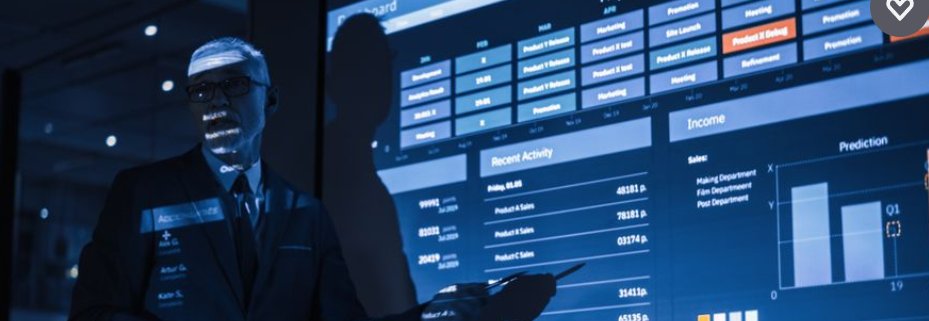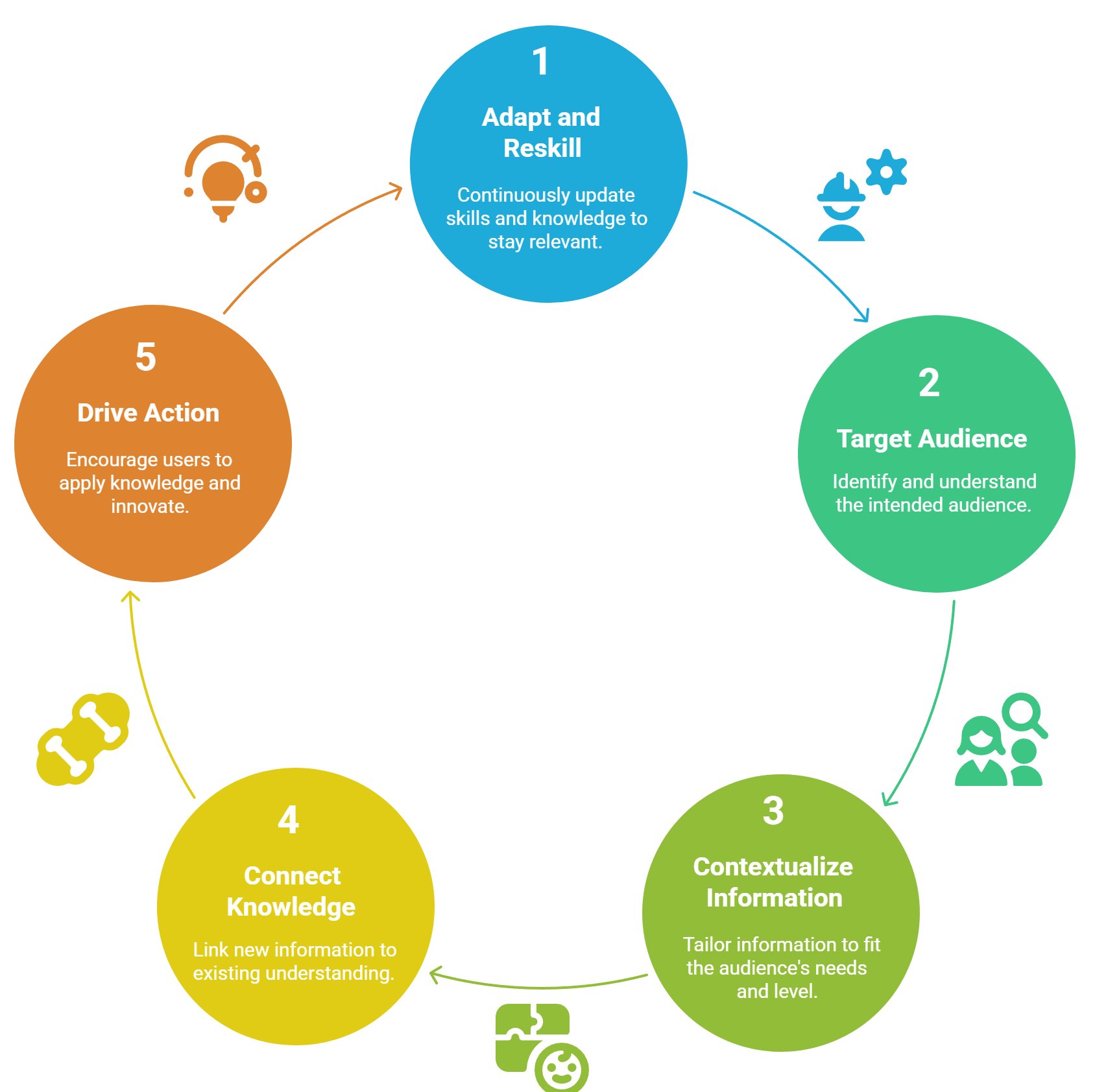 |
Hari Srinivas |
|
Management Tools Series E-088. March 2015.
|

Abstract:
In the fast-changing information age, both the creation of new knowledge and the reinterpretation of existing knowledge are accelerating, requiring individuals to continuously reskill to remain competitive. This paper highlights key principles for effective information dissemination and knowledge management, drawing from experiences in designing and implementing activities at GDRC.
It emphasizes the importance of balancing passive and active content delivery, ensuring accuracy, value-adding to information, and tailoring messages to specific audiences and contexts. The strategies outlined address challenges such as information overload, changing user needs, and the integration of global issues into local actions, promoting meaningful engagement, informed decision-making, and lifelong learning.
Keywords:
knowledge management, information dissemination, user engagement, value-added information, reskilling, information accuracy, learning styles, local-global linkage
|
 |
I n this new information age, knowledge is
changing too fast. Not only is new knowledge and information being
produced, but old knowledge is being reinterpreted and repackaged for
more and varied purposes. There is a constant need to reskill ourselves with this new knowledge in our for us to be competitive. Competition will indeed be between the slow and the fast!!
Accessing, evaluating and using information from a variety of sources
has become a skill in itself for the user - and this has put a heavy
pressure on providers of information to deliver the right
information at the right time and the right scale to the right person.
And this a skill too!
The series of short slides presented here attempts to present some ideas
that were developed in the course of designing, developing and
implementing the activities of GDRC.
|
 1.
There are times to be passive, and there are times to be active. Don't make everything interactive and all linked up to everything else, everywhere. Present a clean block of information, without any distractions (the passive part), and THEN think of interaction, feedback, or links with other sections/places (the active part). Don't distract a user when that block of info is being digested. You need an 'intelligent' and 'enlightened' user interaction - not just blind feedback.
1.
There are times to be passive, and there are times to be active. Don't make everything interactive and all linked up to everything else, everywhere. Present a clean block of information, without any distractions (the passive part), and THEN think of interaction, feedback, or links with other sections/places (the active part). Don't distract a user when that block of info is being digested. You need an 'intelligent' and 'enlightened' user interaction - not just blind feedback.
|
 2.
Yes, someone did say it before - change is the only thing that is permanent - but it especially applies to information dissemination more than anything else. Keeping info updated and properly 'layered' to reflect latest trends and thinking is very very critical that cannot be emphasized enough.
2.
Yes, someone did say it before - change is the only thing that is permanent - but it especially applies to information dissemination more than anything else. Keeping info updated and properly 'layered' to reflect latest trends and thinking is very very critical that cannot be emphasized enough.
|
 3.
Go where no man has gone before. Why should someone see/use something you have to offer? How and why are you different? By making the user understand what you have to offer, are you making him feel 'intelligent'? Inspired? Are you really sharing with him the excitement of having gained 'knowledge'? Do YOU feel that excitement??
3.
Go where no man has gone before. Why should someone see/use something you have to offer? How and why are you different? By making the user understand what you have to offer, are you making him feel 'intelligent'? Inspired? Are you really sharing with him the excitement of having gained 'knowledge'? Do YOU feel that excitement??
|
 4.
While a large body of information may exist on a particular topic, it is important to selectively 'package' it properly for dissemination, based on the level at which it is being disseminated. For example, there is no point in bombarding info on global warming problems to the man-on-the-street, unless it is directly linked to his daily life and his sphere of existence.
4.
While a large body of information may exist on a particular topic, it is important to selectively 'package' it properly for dissemination, based on the level at which it is being disseminated. For example, there is no point in bombarding info on global warming problems to the man-on-the-street, unless it is directly linked to his daily life and his sphere of existence.
|
 5.
Understand the push and pull of information dissemination - are you trying to get a message across to the target audience (the push factor) or are you catering to the info needs of the target (the pull factor)? Both have critical impact on the presentation and dissemination of information.
5.
Understand the push and pull of information dissemination - are you trying to get a message across to the target audience (the push factor) or are you catering to the info needs of the target (the pull factor)? Both have critical impact on the presentation and dissemination of information.
|
 6.
In the process of information dissemination, have a 'constant' part that does not change - and a 'constantly' changing part that provides new refreshing info. Users need something familiar and comforting to come back to, but also something new and refreshing to pique their curiosity.
6.
In the process of information dissemination, have a 'constant' part that does not change - and a 'constantly' changing part that provides new refreshing info. Users need something familiar and comforting to come back to, but also something new and refreshing to pique their curiosity.
|
 7.
There is a clear continuum of information - no information can exist on its own, as an island. There is always a link to something that was already done somewhere/sometime, and there is a link to something that needs to be done in the future. This needs to be emphasized - to provide a proper context to the information being presented, and to also provide justification for the information dissemination itself.
7.
There is a clear continuum of information - no information can exist on its own, as an island. There is always a link to something that was already done somewhere/sometime, and there is a link to something that needs to be done in the future. This needs to be emphasized - to provide a proper context to the information being presented, and to also provide justification for the information dissemination itself.
|
 8.
When it comes to learning, one size does not fit all. People with different learning styles ask different kinds of questions. They gather information, process and apply it in different ways. Some prefer an active engagement with information, focussing on the "nitty-gritty." Some prefer to look at a problem from different perspectives. Some seek to integrate information into theoretical frameworks. Some understand information best by understanding how is applies to real life.
8.
When it comes to learning, one size does not fit all. People with different learning styles ask different kinds of questions. They gather information, process and apply it in different ways. Some prefer an active engagement with information, focussing on the "nitty-gritty." Some prefer to look at a problem from different perspectives. Some seek to integrate information into theoretical frameworks. Some understand information best by understanding how is applies to real life.
|
 9.
Value-adding to information on a situation/scenario involves several steps. These include clarification of the context within which the information exists; providing further and in-depth details; explaining the causes and effects of the situation; developing alternatives available and outlining comparative situations; pointing out the limitations and 'warnings' of the data presented; and forecasting future prospects for the situation.
9.
Value-adding to information on a situation/scenario involves several steps. These include clarification of the context within which the information exists; providing further and in-depth details; explaining the causes and effects of the situation; developing alternatives available and outlining comparative situations; pointing out the limitations and 'warnings' of the data presented; and forecasting future prospects for the situation.
|
 10.
Understand why people need information - (a) to have the necessary capacity and capabilities to carry out an activity or a job, (b) to be able to make changes, attempt new and better ideas/solutions, (c) to maximize output for a given set of resources, and (d) to effectively respond to needs and wants. Are you responding to these needs?
10.
Understand why people need information - (a) to have the necessary capacity and capabilities to carry out an activity or a job, (b) to be able to make changes, attempt new and better ideas/solutions, (c) to maximize output for a given set of resources, and (d) to effectively respond to needs and wants. Are you responding to these needs?
|
 11.
Working in the information age requires a number of 'multi'-skills. (a) being able to effectively use multi-media - different means and technologies, (b) being able to adequately function at multi-levels - from local, regional to national global, (c) being able to utilize information for multi-purposes - using info for different purposes, to answer queries, to generate awareness, to facilitate informed consent etc., (d) being able to initiate multi-activities - initiate formal and informal activities, facilitate interaction and integration of activities; and (e) being able to scale to multi-dimensions - information dissemination on a one-to-one, one-to-many, many-to-one and many-to-many modes.
11.
Working in the information age requires a number of 'multi'-skills. (a) being able to effectively use multi-media - different means and technologies, (b) being able to adequately function at multi-levels - from local, regional to national global, (c) being able to utilize information for multi-purposes - using info for different purposes, to answer queries, to generate awareness, to facilitate informed consent etc., (d) being able to initiate multi-activities - initiate formal and informal activities, facilitate interaction and integration of activities; and (e) being able to scale to multi-dimensions - information dissemination on a one-to-one, one-to-many, many-to-one and many-to-many modes.
|
 12.
Knowledge and information, as mentioned in the introduction to Info-Ideas, is changing fast and there is a need for users to constantly reskill themselves in order to keep up and be able to compete in the changing world. Does the information you are providing enable the user to compete better, to reskill themselves? Does it give them tools and strategies in order to work better, analyze deeper and solve problems?
12.
Knowledge and information, as mentioned in the introduction to Info-Ideas, is changing fast and there is a need for users to constantly reskill themselves in order to keep up and be able to compete in the changing world. Does the information you are providing enable the user to compete better, to reskill themselves? Does it give them tools and strategies in order to work better, analyze deeper and solve problems?
|
 13.
It is important to make a user think, to add another layer of info to the one you are providing. Provide only 3/4 or 9/10s of what you want to provide, and allow the user to 'guess' the rest - and thus feel enlightened, and having gained knowledge - the feeling of having added a layer of info to the basic core that you set out.
13.
It is important to make a user think, to add another layer of info to the one you are providing. Provide only 3/4 or 9/10s of what you want to provide, and allow the user to 'guess' the rest - and thus feel enlightened, and having gained knowledge - the feeling of having added a layer of info to the basic core that you set out.
|
 14.
How to avoid the information overload syndrome? Try direct targeting - not the shot-gun approach. Provide value-added information. Create a continuous/updated information dissemination process - not just a one-shot affair. Provide info that is easily transferable and adaptable. Give opportunity for feedback and improvement. Enhance ownership in users of the info being provided.
14.
How to avoid the information overload syndrome? Try direct targeting - not the shot-gun approach. Provide value-added information. Create a continuous/updated information dissemination process - not just a one-shot affair. Provide info that is easily transferable and adaptable. Give opportunity for feedback and improvement. Enhance ownership in users of the info being provided.
|
 15.
Remember the three rules of good communication - accuracy, accuracy, and accuracy! Employ rigorous safeguards - both in technology and in practices - to ensure the highest possible standards of accuracy, completeness and timeliness of all information being disseminated. In addition, seek assurance of information quality from other independent sources.
15.
Remember the three rules of good communication - accuracy, accuracy, and accuracy! Employ rigorous safeguards - both in technology and in practices - to ensure the highest possible standards of accuracy, completeness and timeliness of all information being disseminated. In addition, seek assurance of information quality from other independent sources.
|
 16.
Remember that there are four situations you can be in, in terms of access to information:
16.
Remember that there are four situations you can be in, in terms of access to information:
| Information you know you have |
Information you don't know you have |
| Information you don't know you have |
Information you don't know you don't have |
Where do you stand with your information management??
|
 17.
Ultimately, for effective environmental action, it is vital to filter global environmental problems to the local level, to the level of the man-on-the-street, in order to ensure real impacts and change. Some of these strategies to target the man-on-the-street, and to 'package' the message at that level include:
17.
Ultimately, for effective environmental action, it is vital to filter global environmental problems to the local level, to the level of the man-on-the-street, in order to ensure real impacts and change. Some of these strategies to target the man-on-the-street, and to 'package' the message at that level include:
(a) Create links between short-term local actions and its long-term global effects/impacts; (b) Build scenarios and forecasts - both good and bad; (c) Make people scared! This is critical for lifestyle changes; (d) Provide numbers/statistics, but in an easily understandable way, including the implications of that data; (e) Give information samples directly related to the individual, and at that level (not at the level of the city or the nation); (f) Paint pictures and visions, again at the individual level, so that it is easily understood and achievable. Tell people what is happening; (g) >Build networks and share information. Provide an opportunity for more interaction and participation to take place.
|
 18.
A Dissemination Package - When attempting to 'sell' a message, an organization or an idea, what are the issues to be kept in mind? (a) Message: What is the message that is being disseminated? In what format has it been presented? Is it appropriate to the user or level of dissemination? (b) Medium: What medium is being used to disseminate the message? What means of online and offline events, publications or other means, are being identified as the medium of dissemination? (c) Material: Through what media or format is the information being packaged and disseminated (both print and electronic)? (d) Target: Who are the intended target audience for the message? Is the information being provided useful for them? How are the target being identified? Are they individuals or organizations? Is the message appropriately being modified for the purpose? (e) Activity: When should the dissemination actually take place? Where? This is critical in ensuring that the intended target receives the information.
18.
A Dissemination Package - When attempting to 'sell' a message, an organization or an idea, what are the issues to be kept in mind? (a) Message: What is the message that is being disseminated? In what format has it been presented? Is it appropriate to the user or level of dissemination? (b) Medium: What medium is being used to disseminate the message? What means of online and offline events, publications or other means, are being identified as the medium of dissemination? (c) Material: Through what media or format is the information being packaged and disseminated (both print and electronic)? (d) Target: Who are the intended target audience for the message? Is the information being provided useful for them? How are the target being identified? Are they individuals or organizations? Is the message appropriately being modified for the purpose? (e) Activity: When should the dissemination actually take place? Where? This is critical in ensuring that the intended target receives the information.
|
 19.
It is critical to add value to a block of information so as to enhance its utility, its applicability and its understanding to a wide variety of situations and users. Some of the components of this value-adding process include: (a) Context - A broader perspective to contextualize the text; (b) Details - A narrower perspective to answer particular details in the text; (c) Causes - Raising questions about the antecedents to the situation in the text; (d) Effects - Raising questions about the consequences of the situation in the text; (e) Alternatives - Raising questions about an opposite situation to that in the text; (f) Comparisons - Raising questions about similar situations elsewhere in time or place; (g) Warnings - Raising problems that may arise from the situation described in the text; and (h) Prospects - Raising questions about what actions may be taken in response to the
19.
It is critical to add value to a block of information so as to enhance its utility, its applicability and its understanding to a wide variety of situations and users. Some of the components of this value-adding process include: (a) Context - A broader perspective to contextualize the text; (b) Details - A narrower perspective to answer particular details in the text; (c) Causes - Raising questions about the antecedents to the situation in the text; (d) Effects - Raising questions about the consequences of the situation in the text; (e) Alternatives - Raising questions about an opposite situation to that in the text; (f) Comparisons - Raising questions about similar situations elsewhere in time or place; (g) Warnings - Raising problems that may arise from the situation described in the text; and (h) Prospects - Raising questions about what actions may be taken in response to the
|
 20.
here are many obstacles to the use of online information. How can you overcome them?
20.
here are many obstacles to the use of online information. How can you overcome them?
Obstacle 1: There is so much information out there. How can I be sure the information can be trusted? - Act on the advice of internationally or locally (depending on the situation) recognized scientists and experts. Select only the highest quality research output, articles, and books on processes, problems, and programs.
Obstacle 2: Even when I have access to high quality research, it is written in technical jargon. - Make the best research easily readable and accessible by capturing key findings and ideas presented in regular English.
Obstacle 3: Whenever I enter a keyword for a search I get hundreds or thousands of hits. There has got to be a better way to search for information! - Link different pieces of information into a dynamic network of knowledge - via questions and answers. Questions raised by one piece of information are answered by other pieces of information. Users traverse the Web by doing the same thing they do in normal conversation: asking questions and looking for answers!
|
 21.
INSPIRE and LINK: Putting together disjointed bits of information does not lead to useful knowledge. Real knowledge and understanding are internal, personal constructs for the user. This is made possible by a learner's ability to connect various pieces of new information to each other, and to link it to what he or she already knows. It also enables extension of existing web of knowledge to accommodate them. Information needs to help users with this process, and explore the connections between new pieces of information. Questions, case studies, and exercises help to develop links, extrapolate, and apply the new information ? so that they make it their own.
21.
INSPIRE and LINK: Putting together disjointed bits of information does not lead to useful knowledge. Real knowledge and understanding are internal, personal constructs for the user. This is made possible by a learner's ability to connect various pieces of new information to each other, and to link it to what he or she already knows. It also enables extension of existing web of knowledge to accommodate them. Information needs to help users with this process, and explore the connections between new pieces of information. Questions, case studies, and exercises help to develop links, extrapolate, and apply the new information ? so that they make it their own.
|
 Figure 1: Cycle of Effective Information Management
Figure 1: Cycle of Effective Information Management
Distilling the 21 cards above into three key messages, we have the following:
- Information and knowledge are constantly changing users and providers must continuously adapt, reskill, and add value to stay relevant and competitive. The rapid pace of change requires ongoing learning, thoughtful repackaging of information, and the development of tools that help users apply knowledge effectively.
- Effective information dissemination depends on targeting the right audience with the right message, format, and medium - balancing clarity, accuracy, and interaction without overwhelming users. Information should be contextualized, layered, and linked to usersf real needs, learning styles, and levels, creating meaningful engagement and avoiding overload.
- Information gains meaning through connection - linking new knowledge to existing understanding, local realities, and future action creates impact and drives positive change. Building networks of information and integrating global issues into local contexts enables users to act, innovate, and make informed decisions.
|